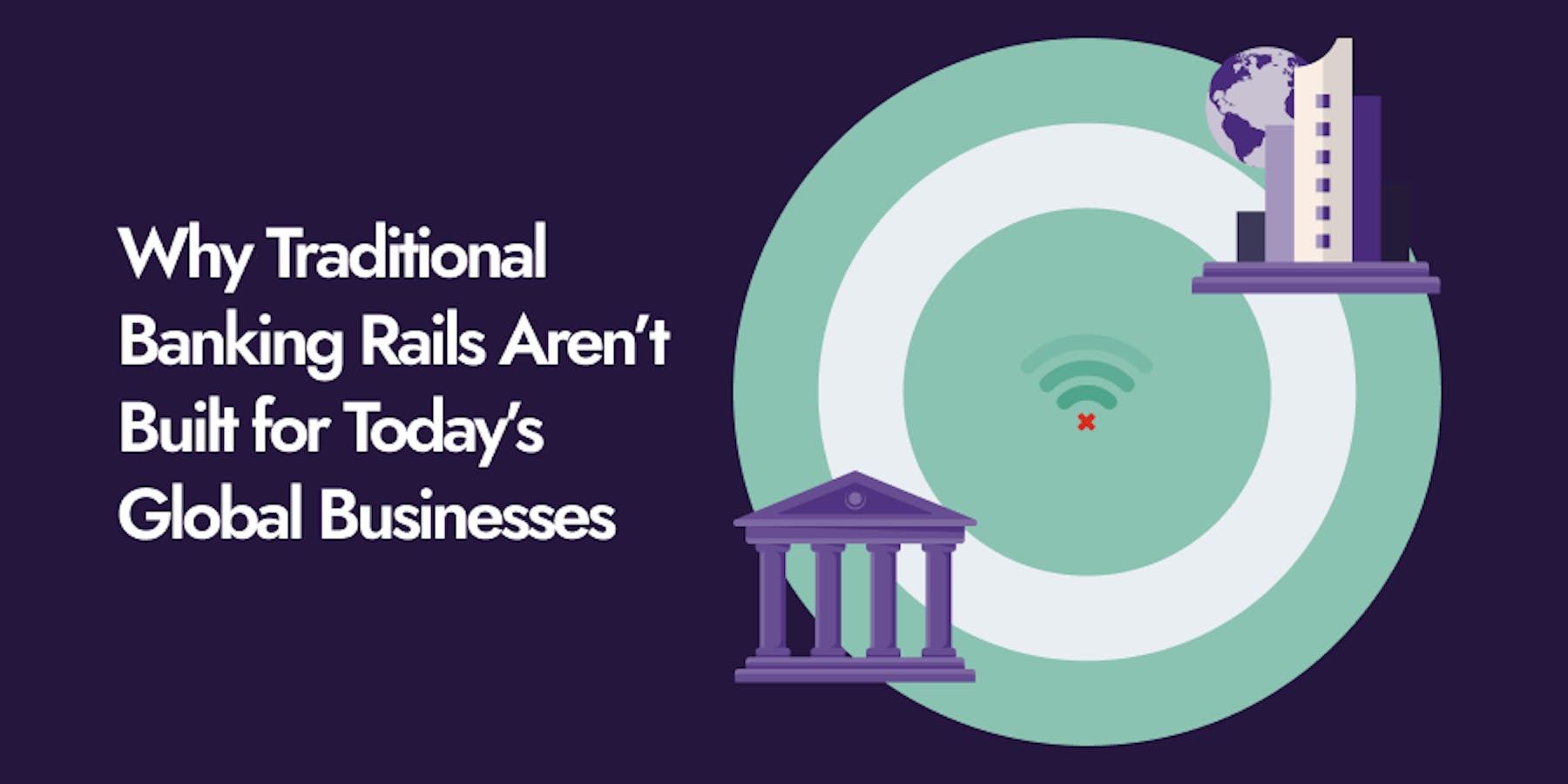Why Traditional Banking Rails Aren’t Built for Today’s Global Businesses
Insights
Back to blog
Pierre Redman
2025-09-29
Insights
On this page
Traditional banking rails no longer meet modern business needs. Discover how digital settlement solutions cut costs, boost speed, and add transparency.
For decades, companies have relied on the same banking rails to move money across borders. Wire transfers, correspondent banks, SWIFT messages. The machinery is old, but it still works. Or at least, it works “well enough”, they say.
But “well enough” doesn’t cut it anymore.
These systems were designed in the 1970s and 80s, long before real-time commerce, global e-commerce, or instant supply chain financing. They were built for a world of paper instructions and multi-day settlements, and that’s still how they behave.
A typical international wire can take three to seven days, depending on how many intermediaries touch it. Each bank along the way takes a fee, sometimes disclosed, sometimes not. By the time funds arrive, they’re often short, and neither side has much visibility into what happened in between. Treasury teams spend hours chasing transfers, reconciling mismatched records, and waiting on liquidity they can’t afford to have tied up.
That might have been tolerable in a slower economy, but not in today’s world.
For many businesses, cross-border payments aren’t occasional; they’re the core of daily operations. Importers, exporters, logistics firms, fintechs: all depend on moving money quickly, predictably, and at scale. Traditional rails weren’t built for that.
I spoke with a CFO expanding into multiple African markets. Their growth was strong, but payments from Europe to Nigeria took five days to clear. Hidden fees left them short. “It’s like running a race with weights on your ankles,” they said. “You can move forward, but you’ll never be fast enough to win.” The truth is that traditional systems are still good at what they were built for, moving large sums between big banks. But they’re not good at what modern businesses actually need: speed, cost-efficiency, transparency, and flexibility.
That’s why new infrastructure is starting to take over. Digital settlement rails, including stablecoin-based systems, allow businesses to settle in minutes, not days. They make pricing transparent, cut out unnecessary intermediaries, and provide real-time visibility. Treasury teams can plan cash flow with confidence instead of uncertainty.
I’ve seen this shift firsthand. A company moving significant volumes into multiple African markets cut settlement times from five days to same-day after switching to Yellow Card’s Treasury Portal. FX costs dropped, transparency improved, and the treasury team could finally operate at the speed of the business. Legacy rails can’t deliver that. So the question isn’t whether these old systems work. The question is: are they still working for you?
I’d love to hear from treasury and finance leaders: how have outdated banking rails slowed down your operations? Share your experience in the comments. I’ll follow up with more insights and some practical ways forward. And if you’d rather skip the wait, you can explore what modern settlement looks like here:https://yellowcard.io/treasury.
Disclaimer: This article is for information purposes only and should not be construed as legal, tax, investment or financial advice. Nothing contained in this article constitutes a solicitation, recommendation, endorsement or offer by Yellow Card to buy or sell any digital asset. There is risk involved in investing or transacting in digital assets, please seek professional advice if you require one. We do not assume any responsibility or liability for any loss or damage you may incur dealing with digital assets. For more information on Digital Asset Risk Disclosure please see - Risk Disclosure.


